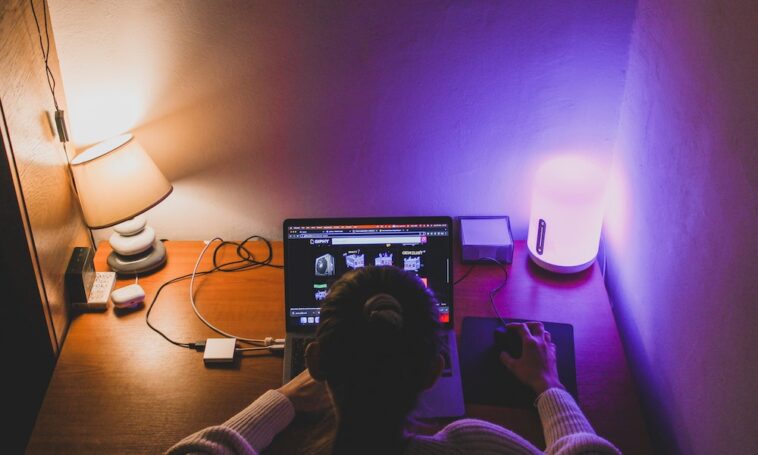The Future of Education, The education landscape is constantly evolving, and technological advancements have played a significant role in shaping the way we learn. One such innovation that holds immense potential for transforming education is virtual and augmented reality (VR/AR). This article delves into the future of education, exploring the impact of VR and AR in the classroom, their benefits, challenges, and implementation strategies.
Before delving into the application of VR and AR in education, it’s crucial to understand these technologies. Virtual reality refers to a simulated experience that can be similar to or completely different from the real world, while augmented reality overlays digital content onto the physical world.
Read More: 7 Important Roles of Big Data in Improving Education Outcomes
Explore the Contents
The Current State of Education
The Future of Education, Traditional classroom setups have limitations when it comes to engaging students and catering to different learning styles. The future of education lies in leveraging technological advancements to provide a more immersive and personalized learning experience.
Benefits of Virtual and Augmented Reality in Education
Enhanced Learning Experience
VR and AR technologies offer a multi-sensory learning experience that enhances comprehension and retention. By creating realistic simulations and interactive environments, students can explore complex concepts in a more engaging and memorable way.

Improved Engagement
The Future of Education, With VR and AR, students become active participants in their learning journey. These technologies stimulate curiosity, encourage exploration, and foster a deeper understanding of the subject matter, resulting in increased student engagement.
Interactive Simulations
Simulations created through VR and AR allow students to experience real-world scenarios without any physical risks. This practical approach promotes critical thinking, problem-solving skills, and decision-making abilities.
Access to Remote Learning
The Future of Education, VR and AR bridge the gap between physical and remote learning by providing immersive experiences from anywhere. Students can explore historical sites, visit museums, or conduct scientific experiments, regardless of their geographical location.
Personalized Education
The Future of Education, Every student has unique learning needs and preferences. VR and AR enable educators to customize lessons based on individual requirements, allowing students to learn at their own pace and style.
Skill Development
VR and AR are powerful tools for developing essential skills such as collaboration, communication, creativity, and adaptability. By simulating real-world scenarios, students gain practical experience that prepares them for future challenges.
Challenges and Limitations
Cost and Accessibility
Implementing VR and AR in education requires investment in hardware, software, and infrastructure. Ensuring accessibility to these technologies for all students and schools remains a challenge, particularly in underprivileged communities.
Technical Requirements
The Future of Education, VR and AR rely on powerful devices and high-speed internet connections. Not all schools or students have access to the necessary resources, hindering widespread adoption of these technologies.
Teacher Training and Integration
The Future of Education, To effectively integrate VR and AR into the curriculum, teachers need training and professional development opportunities. Educators must learn how to create immersive experiences, design relevant lesson plans, and provide guidance during virtual activities.
Ethical Considerations
The use of VR and AR raises ethical concerns regarding data privacy, content appropriateness, and potential addiction. It is crucial to establish guidelines and ethical frameworks to address these issues and protect the well-being of students.

Implementing Virtual and Augmented Reality in the Classroom
Integrating VR and AR in Lesson Plans
Teachers can incorporate VR and AR in lesson plans to supplement traditional teaching methods. By identifying learning objectives and aligning them with the appropriate technology, educators can enhance student understanding and engagement.
Providing Adequate Resources
Schools should invest in VR and AR resources, ensuring availability for all students. Collaboration with technology companies, grants, and partnerships can help make these resources more accessible and affordable.
Collaboration and Sharing Best Practices
The Future of Education, Educators, administrators, and policymakers should collaborate to share best practices and success stories. Establishing platforms for sharing lesson plans, experiences, and research can foster innovation and facilitate the adoption of VR and AR in classrooms worldwide.
Successful VR and AR Integration
The Future of Education, Highlighting successful case studies where VR and AR have been implemented effectively can inspire other educators and schools to explore these technologies. Sharing real-world examples can showcase the potential impact of VR and AR in different subjects and grade levels.
Future Possibilities and Innovations
The future of education holds countless possibilities for VR and AR. Ongoing advancements in technology will result in more immersive, affordable, and accessible solutions, opening up new avenues for learning and skill development.
The Future of Education, Conclusion
Virtual and augmented reality are transforming the landscape of education, providing students with immersive learning experiences and personalized educational opportunities. While challenges exist, the potential benefits of VR and AR in the classroom cannot be ignored. By addressing accessibility issues, offering teacher training, and promoting collaboration, we can embrace these technologies and unlock a brighter future for education.
Read More: How Artificial Intelligence is Changing the Education Landscape

FAQs
- What is virtual reality (VR) in education?
- How does augmented reality (AR) enhance the learning experience?
- What are the challenges of implementing VR and AR in schools?
- Can VR and AR be used for teaching all subjects?
- Is VR and AR suitable for students with special needs?
- How can schools overcome the cost barrier associated with VR and AR?
- Are there any studies supporting the effectiveness of VR and AR in education?



